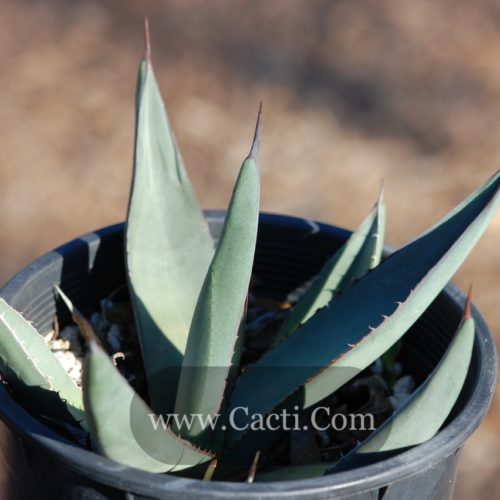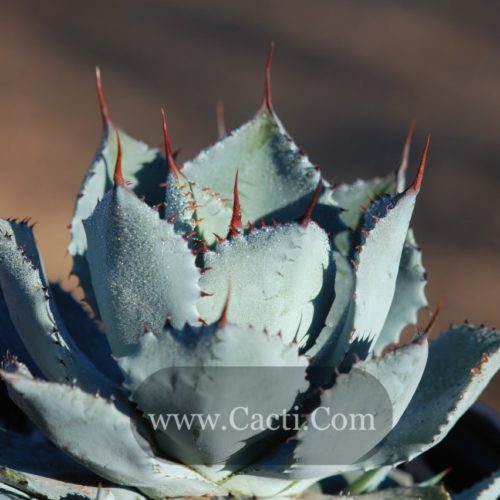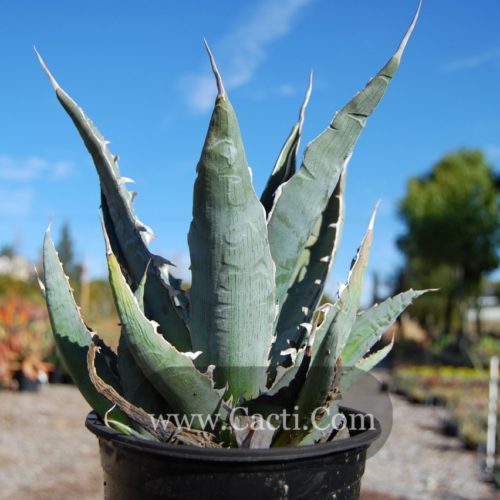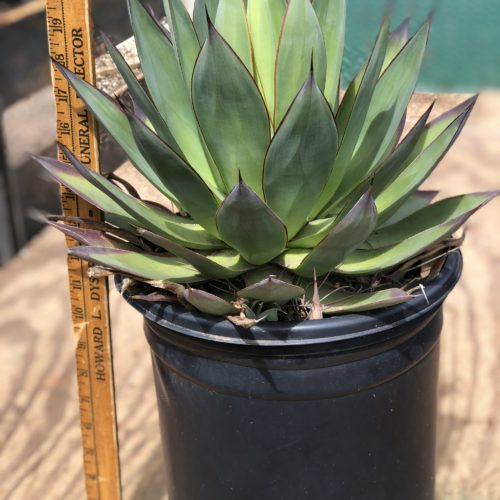Aloe rubroviolacea
Horticultural Data | Shipping & Availability | Top
This aloe comes from the mountains of Yemen and Saudi Arabia on the Arabian Peninsula preferring steep and rocky areas above 7,000 feet elevation.
This pretty aloe makes a nice display at the middle of a succulent border or bed. It also pairs well with cactus and agaves and it looks beautiful in a large pot. Great in rock gardens or clambering over rocky slopes.
This plant is appreciated by many as one of the more spectacular aloes available. It grows quickly in beautiful 2 foot rosettes of large succulent leaves that emerge from heavy stems. The leaf color is blue green and takes on reddish-pink to violet hues in full sun. Stems elongate over time and form offshoots at the base where old leaves have dried and fallen off. Leaves have small yellow to orange teeth on their margins.
The leaves have a fluorescent green sap which dries a dark violet color and can stain concrete and clothing.
This aloe begins blooming in November with spikes of waxy orange-red flowers. Flower spikes are generally unbranched. Although the plant is fairly hardy, the flowers are not and they will be damaged by frost so protect them from freezing temperatures for the best floral display.
Horticultural Data
Description | Horticultural Data | Shipping & Availability | Top
Names and Synonyms: None
Common Names: Arabian Aloe
Family: Aloeceae
Origin: This aloe comes from the mountains of Yemen and Saudi Arabia on the Arabian Peninsula preferring steep and rocky areas above 7,000 feet elevation.
Height: 2-3′
Width: 4-6′
Cold Tolerance: 20 to 25°F, -6.7 to -3.9°C
Heat Tolerance: Very high heat tolerance
Light Requirement: Looks best in full sun. Can take light shade in very hot climates.
Water needs: Very drought tolerant
Maintenance: Remove dried leaves and flower spikes as desired.
Uses: This pretty aloe makes a nice display at the middle of a succulent border or bed. It also pairs well with cactus and agaves and it looks beautiful in a large pot. Great in rock gardens or clambering over rocky slopes.
Propagation: A. rubroviolacea can be propagated from seed or by removing and replanting offsets.
Problems: Requires good drainage. Snails can damage the attractive leaves.
Research Links:
http://www.ruthbancroftgarden.org/rbgarden/pages/PlantHighl2005Dec.html
http://davesgarden.com/guides/pf/go/60510/
http://www.smgrowers.com/products/plants/plantdisplay.asp?plant_id=2879
http://www.agaveville.org/viewtopic.php?f=26&t=1683
http://allthingsplants.com/plants/view/116335/Aloe-Aloe-rubroviolacea/
Shipping & Availability
Description | Horticultural Data | Shipping & Availability | Top
There is a minimum purchase of any 4 plants for online orders. All plants shipped bare root. Other sizes may be available for pick up from our growing grounds in Fallbrook, CA. For more information, give us a call at 760-990-4762.
Click here for complete Price List.




